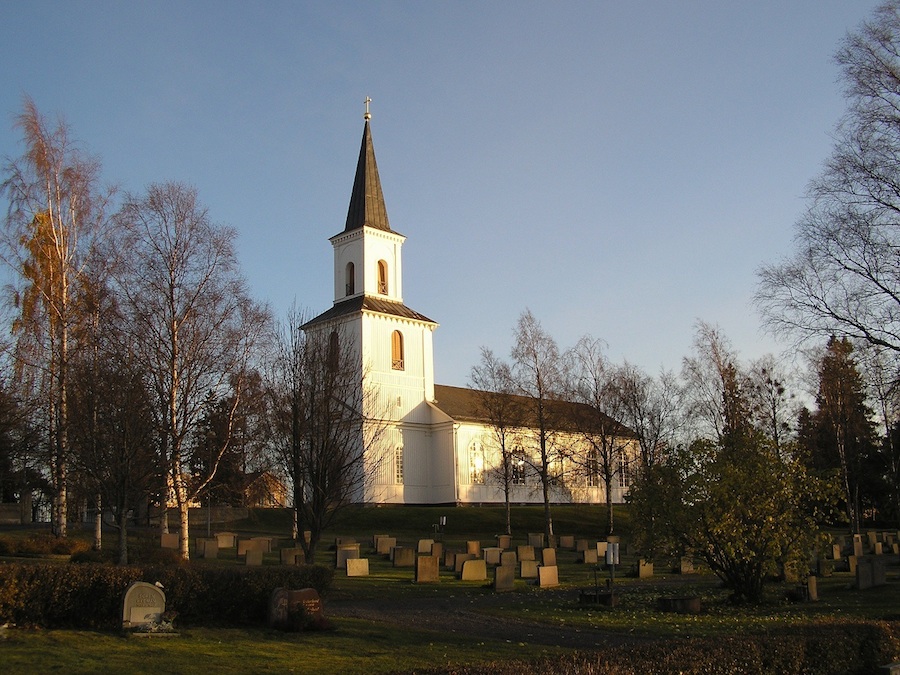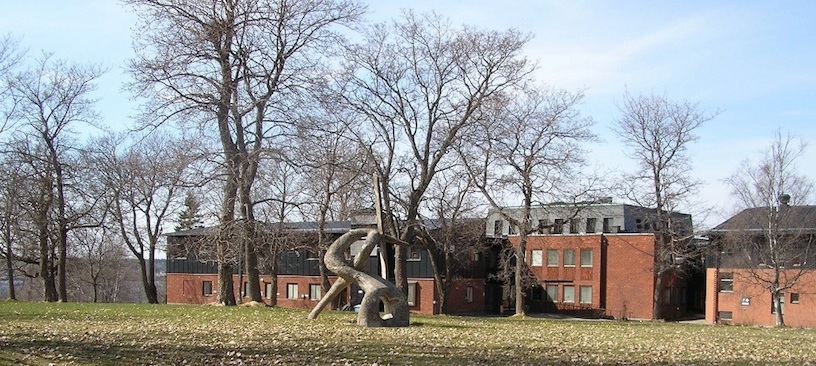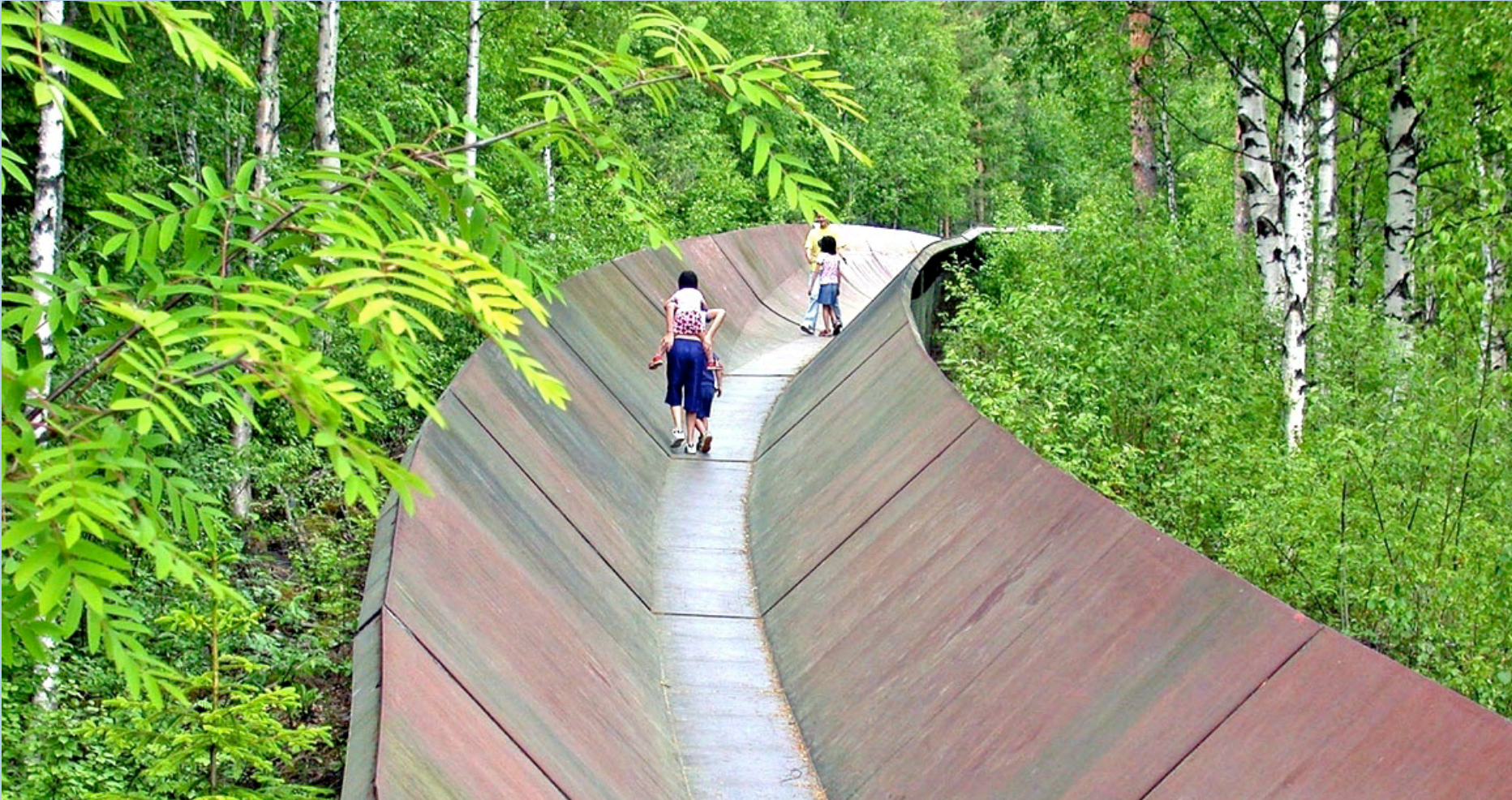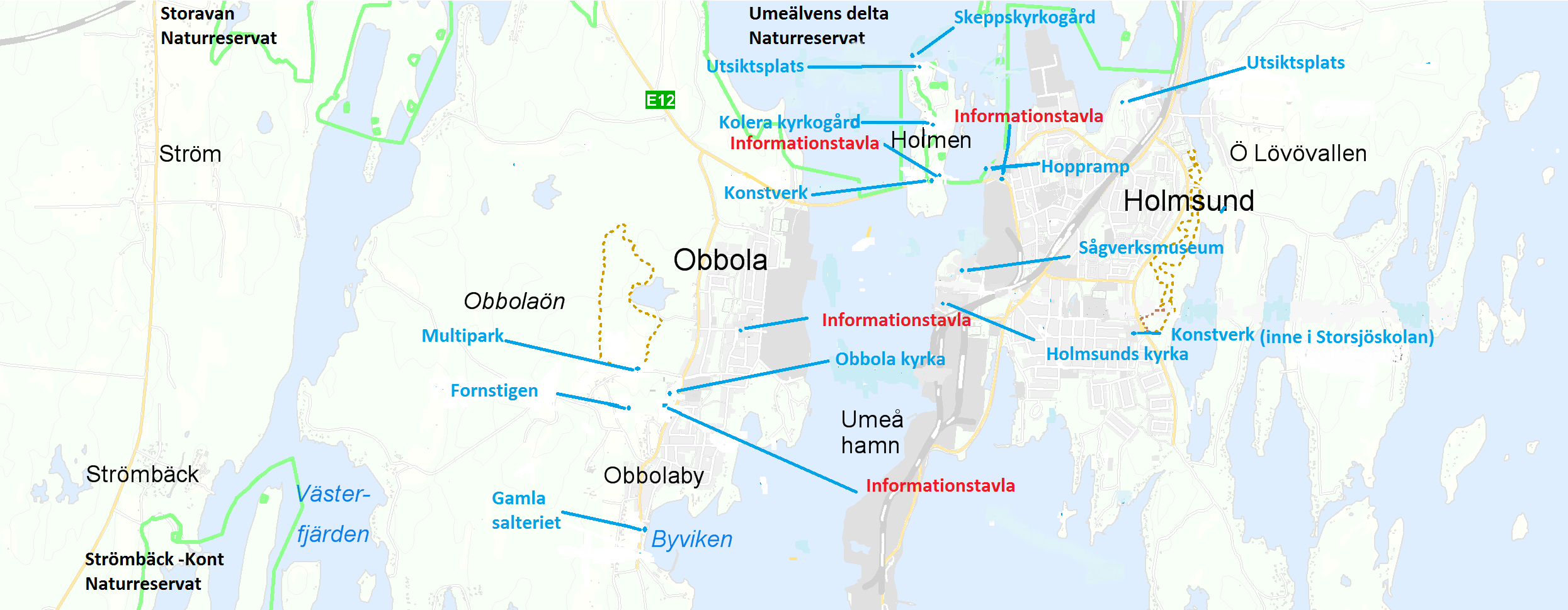Located at the eastern mouth of the Ume River, Holmsund is a community which, together with Obbola on the western side of the river, forms the Holmsund-Obbola district of Umeå Municipality.
Holmsund and Obbola Holmsunds districts, which later became Holmsund Municipality, were formed in 1947.
Holmsund Municipality merged with Umeå Municipality in 1974.
This area has a number of interesting sites. You will find artwork from the Seven Rivers Art Road, walking paths, Storsjöhallen’s adventure pool, a sawmill museum, a restaurant, Umeå Golf Club, Västerbacken with historic worker houses and more.
The 1,381-metre-long Obbolabron bridge, built in 1989, connects Holmsund, Holmen and Obbola.
Holmsund includes Lövön, with Lövöbacken, Djupvik, Sandvik, Södra Eriksdal and Holmsund itself.
Destinations & sights
History & curiosities
Destinations & sights
Holmsund Church
The church was built in 1863 by Dickson & Co in connection to their sawmill in Holmsund.
It was for use by the company’s employees until 1918, when the Holmsund congregation took over and it became a parish church. The church is located on Västerbacken and was designed by assistant vicar J.A. Linder.
The three-nave hall church is made of wood, with a gable roof and a western tower. A sacristy was added in 1920 and in 1986, a new addition was added for parish activities. Extensive renovations were carried out in 1954 and 2005.
Source: Holmsund congregation.

Holmsund Church. Photo: Lars Beckman

Västerbacken conference facility. Photo: Lars Beckman
Ski jump at Obbola bridge
UHSK Freeskiing in Holmsund now has a summer training facility. Skis, ski boots and helmets, as well as wetsuits and life vests are needed in Sweden’s fourth water jump.

Foto: Roland Norbäck
History & curiosities
Archipelago Sawmill Museum (Skärgårdens Sågverksmuseum)
Dickson & Co purchased Västerbacken in the 1840s for the Baggböle sawmill’s wharf at the mouth of the Ume River.
Worker housing and a church, school and parsonage were built here.
Today, the buildings have another use. A sawmill museum has opened in one of the historic worker’s houses, presenting the sawmill workers’ home environment, work environment, leisure environment, the evolution of the sawmill industry and more. See what the sawmill workers’ lives were like in different phases from the 1800s to the 1950s. The exhibition also addresses how the temperance and free church movements affected sawmills in Holmsund.
The museum is run by the Skärgårdens Sågverksmuseum Foundation (Archipelago Sawmill Museum foundation). It is open in summer.





